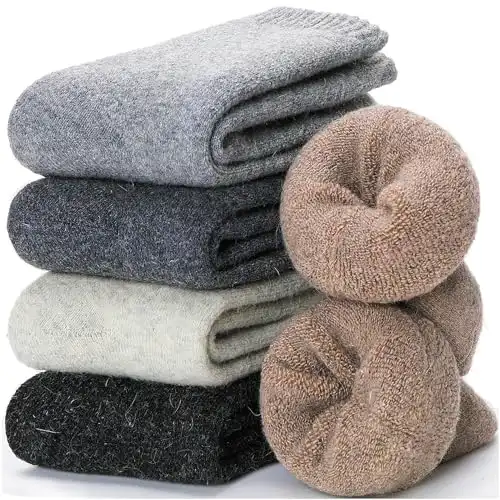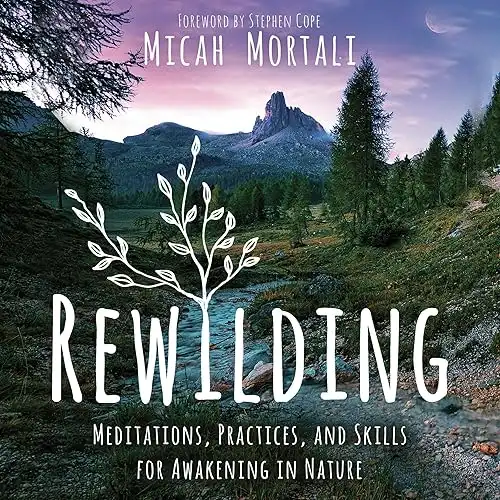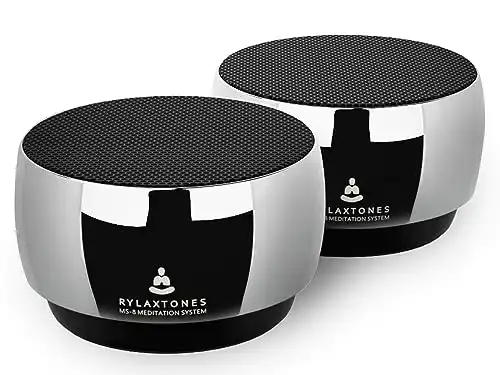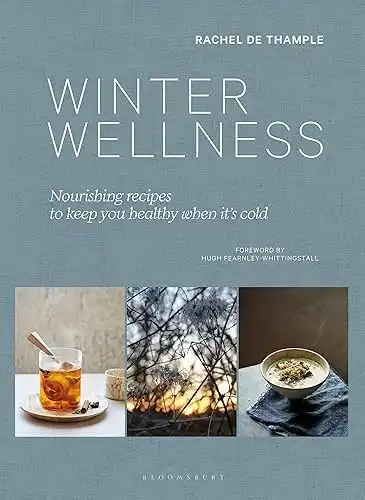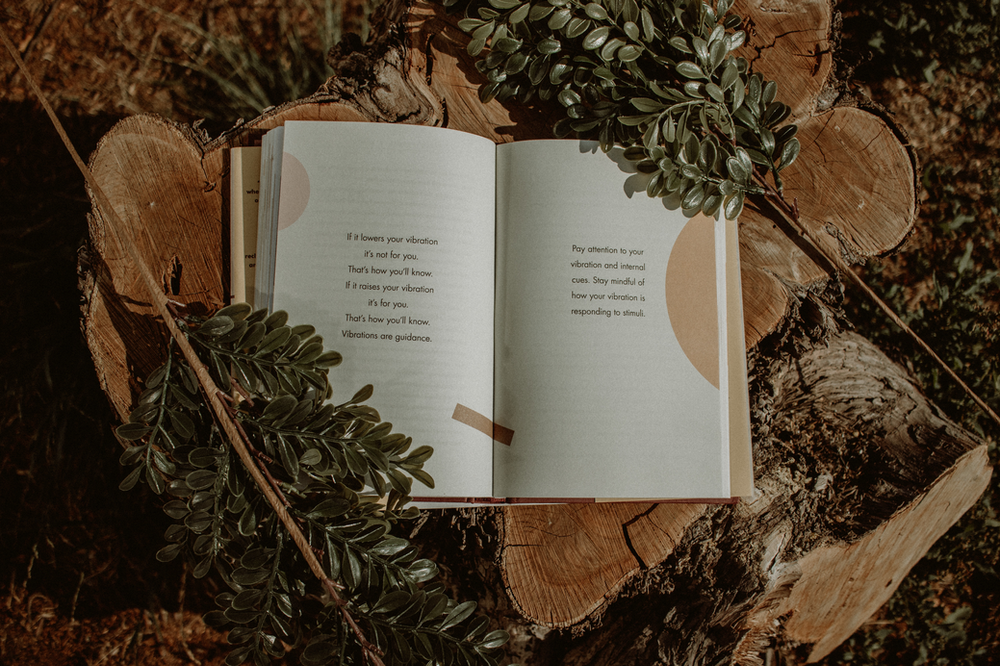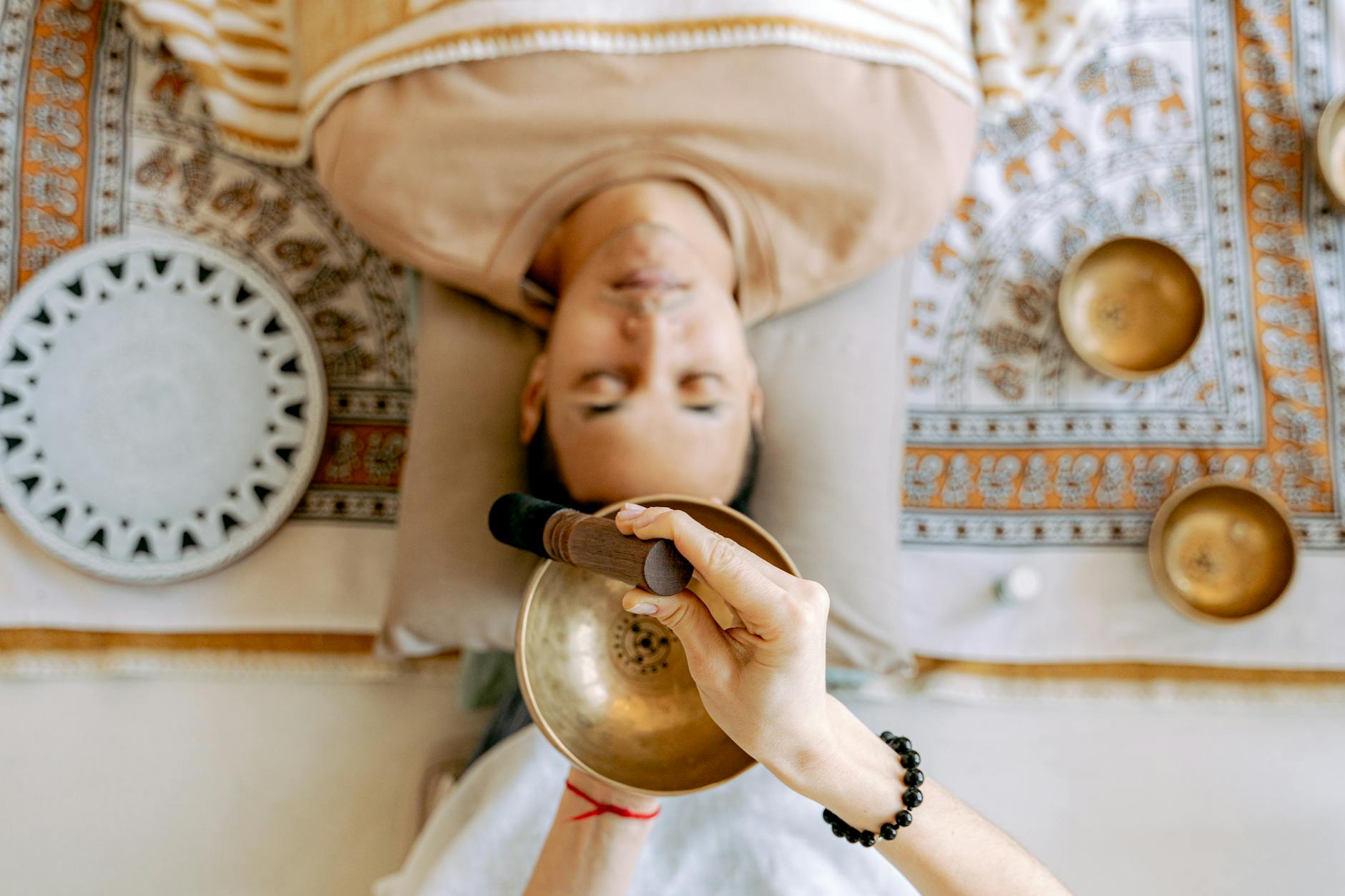5 Unexpected Ways To Increase Positive Energy This Winter
This is from the Winter Wellness Series

The alarm rings at 7 AM, but outside, darkness still blankets the world. Sound familiar? If you’re like millions of others, the winter months can feel like an endless battle against fatigue and low spirits. But here’s the thing: winter doesn’t have to be about merely surviving until spring.
Drawing from both ancient wisdom and modern research, I’ve discovered five unexpected practices that can transform your winter experience from draining to energizing. These aren’t your typical “take vitamin D and use a lightbox” suggestions (though those work too!). Instead, we’ll explore evidence-based approaches that work with winter’s natural rhythm, not against it.
1. Embrace Hygge: The Danish Secret to Winter Joy
In January 2020, I hit my winter breaking point. Living in the city with the constant push to maintain summer-level productivity left me exhausted and resentful. We picked up and moved to a cabin in the mountains to embrace a simpler life. Then I discovered hygge (pronounced “hoo-ga”), the Danish practice of intentional coziness that might explain why Denmark consistently ranks among the world’s happiest countries—despite their long, dark winters.

What Exactly is Hygge?
Think of hygge as mindful comfort. It’s not just about being cozy; it’s about creating moments of intentional well-being. Research from the University of Copenhagen suggests that these micro-moments of comfort can significantly impact our overall winter mood.
Quick-Start Hygge Guide (All Under $20):
- Morning Ritual (5 minutes): Replace harsh overhead lights with a warm table lamp during breakfast
- Work Break (10 minutes): Wrap yourself in a soft blanket while enjoying tea from your favorite mug
- Evening Wind-Down (15 minutes): Light a candle and read a few pages of a book you love
For Different Living Spaces:
- Small Apartment: Create a cozy corner with floor cushions and soft lighting
- Shared Home: Designate a peaceful nook in your bedroom
- Office: Keep a special tea mug and soft, incandescent light at your desk
Budget-Friendly Hygge:
Contrary to Instagram-perfect images, authentic hygge doesn’t require expensive accessories. The most impactful elements are often free
- Rearrange furniture to create intimate spaces
- Gather existing soft items (blankets, pillows) in one cozy spot
- Use existing lamps for gentler lighting
- Open curtains during daylight hours to maximize natural light
The Science Behind Why It Works:
Recent studies in environmental psychology show that our physical environment significantly impacts our mental state. Dr. Sarah Williams, an environmental psychologist at Cornell University, explains: “Creating controlled, comfortable spaces gives us a sense of agency during a season when we often feel powerless against the elements.”

Common Challenges:
“I don’t have time for this”
Solution: Start with your existing routine. Simply dim the lights and slow down during your regular morning coffee.
“My space is too small”
Solution: Focus on one small area—even a comfortable chair with good lighting can become your hygge spot.
“I live with others who aren’t interested”
Solution: Start with personal hygge moments in your own space, like your bedroom or desk area.
Want to track the impact? Rate your mood each morning and evening on a scale of 1-10 for a week before starting these practices, then compare after implementing them for a week. Many of my readers report a 30% improvement in their winter mood after just seven days of intentional hygge practice.
2. Connect with Nature Daily (Even When It’s Freezing!)
“But it’s too cold outside!” I get it, but have you heard about the “Norwegian friluftsliv” concept—the commitment to outdoor life year-round? This changed my entire winter experience: just 20 minutes of outdoor exposure can increase positive energy in winter as effectively as a cup of coffee, according to research published in the Journal of Environmental Psychology.
Cozying up inside is wonderful, but it needs to be balanced with fresh air. This can take extra effort in the winter, but it’s worth it. I commit to walking outdoors, no matter the weather. And it gets cold where I live! At least a few days a year under 0 degrees Fahrenheit. If I can do it, so can you. If you have the opportunity to sit by a crackling fire pit under the starry night sky, even better.
Spending time outdoors can do wonders for your mood. The fresh air, crunching snow underfoot, and winter landscapes can help you feel more grounded and in tune with the natural world. Brisk, winter air gives you vitality and a sense of rejuvenation that carries over to other areas of your life.

Why Winter Nature Time Works
University of Michigan researchers found that winter nature exposure offers unique benefits you won’t get any other season. The stimulating effects of cold air improve mental focus, while moderate cold exposure enhances immune function. Even on cloudy days, natural light exposure helps regulate our sleep cycles and yes, we still produce vitamin D through those winter clouds.
Getting Started: A Simple Approach
Start with just five minutes outdoors during your morning coffee. Once comfortable, try a brief lunchtime walk around the block. As your cold tolerance builds, you might find yourself drawn to longer adventures.
- Easy: Bird watching from a sheltered spot
- Moderate: Winter photography walks
- Adventurous: Snowshoeing or winter hiking
What to Wear (Without Breaking the Bank)
The secret to comfortable winter outdoor time is layering:
- Base, middle and outer layers you can add or remove
- Natural fibers like wool regulate your temperature
- Mittens, scarves, and hats keep the most sensitive areas warm
- Waterproof footwear and outer layers keep dampness out
You don’t need expensive gear to start. Many of my readers began with basic layers they already owned, adding pieces gradually as their outdoor time increased.

Common Challenges Solved
“I leave and return from work in darkness”
Use your lunch break for outdoor time, or make weekend nature connection a priority.
“I live in an urban area”
City parks, building rooftops, or even a sunny balcony can provide that natural connection. Indoor plants and nature sounds can supplement when outdoor time isn’t possible.
“I don’t have enough energy to get outside.”
This is a catch-22 because getting outside is what will give you the energy. Commit to daily nature for a week (you can do anything for a week) then reassess to see if you have more energy.
Making It Stick
1000 Hours Outside has a wonderful app and printable tracker, as well as a wealth of inspiration. I highly recommend saving their site for days you’re feeling unmotivated. Yet, taking that first step outdoors gives you an instant energy boost. You’ll likely notice improvements within two weeks, even starting with just five minutes daily. As Dr. Jennifer Ross, environmental psychologist, reminds us: “The key to successful winter outdoor time is preparation, not perfection.”
3. Experiment with Sound Healing For Positive Winter Energy Alignment
When I first heard about sound healing, I was skeptical. How could simple sound waves impact my winter mood? But after attending a sound bath at my local yoga studio last winter, I discovered what researchers at the British Academy of Sound Therapy have been studying for years: specific sound frequencies can actually influence our nervous system and help combat the winter blues.

What is Sound Healing?
Sound healing uses specific frequencies and vibrations to promote relaxation and reduce stress. Think of it like a massage for your nervous system. Research from the Journal of Evidence-Based Integrative Medicine shows that sound healing can reduce anxiety and improve sleep quality—two common challenges during winter months.
Simple Ways to Start
You don’t need expensive equipment or training to benefit from sound healing:
- Use a free sound healing app during your morning routine
- Play singing bowl videos while working
- Listen to nature sounds during your commute
Creating a Sound Practice at Home
The easiest way to begin is with a 10-minute evening session. Find a quiet space, use headphones for better effect, and try these research-backed sounds:
- Tibetan singing bowls (for focus)
- Ocean waves (for relaxation)
- 432 Hz music (for stress reduction)

Common Challenges Solved
“I don’t have time for another practice”
Layer sound healing with existing habits—play calming frequencies during your shower, commute, or work time.
“I’m not sure what to listen to”
Start with nature sounds, which studies show have universal calming effects. As you explore, you might discover preferences for specific frequencies or instruments.
“I live with others”
Use headphones for personal practice, or invite household members to share the experience—many find that background sound healing music creates a more peaceful home environment.
How to Know It’s Working
Most people notice effects within their first session—typically a sense of calm or improved focus. Keep a simple mood tracker for a week, noting how you feel before and after each sound session. Within two weeks, you may notice lasting improvements in:
- Sleep quality
- Stress levels
- Mental clarity
- Energy levels
Dr. Maria Chen, a sound therapy researcher at UCLA, suggests: “The key is consistency over complexity. Even five minutes of intentional sound healing daily can create meaningful changes in your winter well-being.“
4. Practice Winter Gratitude
For years, I approached winter with a mindset of endurance—something to “get through” until spring arrived. But a deep meditation session in the snow one day shifted my perspective entirely. “Winter isn’t an obstacle,” I heard my inner wisdom say, “it’s an invitation to rest and reflect.” Research from Harvard’s Psychology Department supports this view, showing that seasonal gratitude practices can significantly reduce winter depression symptoms.

Why Gratitude Matters More in Winter
Our bodies naturally slow down in winter, but modern life rarely allows for this seasonal rhythm. Instead of fighting this natural downshift, gratitude helps us reframe it. Studies show that regular gratitude practice can:
- Increase production of mood-boosting neurotransmitters
- Improve sleep quality during long winter nights
- Reduce seasonal stress and anxiety
- Strengthen immune system function
Starting Your Winter Gratitude Practice
The most effective approach is also the simplest. Each morning, write down three things you specifically appreciate about the current season. They can be as simple as:
- The quiet of fresh snowfall
- Cozy indoor moments
- Extra time for reflection and rest
Making It Personal
Dr. Sarah Thompson, positive psychology researcher, recommends creating “gratitude anchors”—specific winter moments that trigger appreciation. For instance:
- Morning: Notice the unique quality of winter light
- Midday: Appreciate the warmth of your favorite hot drink
- Evening: Recognize the beauty of early sunsets and starry skies

Common Challenges Solved
“I can’t think of anything to be grateful for in winter”
Start with basic physical comforts—warm shelter, hot food, cozy clothing. Build from there to more specific winter pleasures.
“I forget to practice regularly”
Link gratitude to existing winter routines, like your morning coffee or evening tea. Some of my readers place sticky notes on their bathroom mirrors or set gentle phone reminders.
“My practice feels artificial”
Instead of forcing positivity, acknowledge both challenges and gifts. “I’m grateful for my warm home, especially on this difficult cold day” is more authentic than pretending to love every winter moment.
Measuring Your Progress
Rather than tracking how many items you list, notice how your winter perspective shifts over time. Many readers report that after a month of consistent practice, they naturally begin noticing winter’s gifts without conscious effort. One reader shared, “I caught myself admiring frost patterns on my window—something I would have cursed last winter.”
Remember, the goal isn’t to love every aspect of winter but to find balance in your experience of the season. As the Norwegians say, “There’s no such thing as bad weather, only opportunities to appreciate warmth and shelter more deeply.”
5. Embrace Creative Expression Through Art
The stillness of winter provides a natural canvas for creativity. As an analytical person who always claimed “I’m not artistic,” I was surprised to discover that art therapy isn’t about creating masterpieces—it’s about the therapeutic process itself. Research from the American Art Therapy Association shows that creative expression can reduce winter-related stress by up to 45%.

Why Art Works in Winter
According to neuroscience research, creative activities trigger the release of dopamine—the same feel-good chemical that sunlight provides. Art-making offers:
- Improved mood through color interaction
- A meditative state that reduces stress hormones
- Enhanced self-expression during a naturally introspective season
- A sense of accomplishment during low-energy months
Getting Started Without Pressure
Begin with simple materials you might already have:
- Colored pencils and paper for doodling
- An old magazine for collaging
- Your phone’s camera for winter photography
- A notebook for sketch journaling
Making Time for Creativity
Art therapist Lisa Martinez suggests “micro-creative moments” throughout your day:
- Morning: 5-minute coffee cup sketching
- Lunch break: Color-based photo challenge
- Evening: 10 minutes of free drawing before bed

Common Challenges Solved
“I have zero artistic talent”
Focus on the process, not the result. Simple mark-making or color exploration counts as therapeutic art practice.
“I don’t know what to create”
Start with winter themes: snowflakes, bare trees, or abstract interpretations of how winter feels. One of my readers began by simply drawing different types of circles, which evolved into a meditative practice.
“I don’t have art supplies”
Use what’s available—sketch with your finger on a foggy window, arrange objects on your desk, or create temporary designs in fresh snow.
Building a Sustainable Practice
Rather than aiming for daily masterpieces, think of winter art as a form of visual journaling. Keep your supplies visible and accessible. Many readers find success combining art with other practices—drawing while listening to sound healing music, or sketching things they’re grateful for.
Conclusion: Creating Your Winter Wellness Ritual
These five practices—hygge, nature connection, sound healing, gratitude, and creative expression—work best when gently woven together. Start small, combining elements that resonate with you. For example:
- Begin your day with gratitude journaling in a cozy hygge corner
- Take nature walks while listening to healing frequencies
- Sketch the winter scenes you encounter outdoors
- Practice sound healing during your creative sessions
Remember, winter wellness isn’t about forcing yourself into rigid practices. It’s about finding ways to work with the season’s natural rhythm. As you experiment with these approaches, you’ll discover your unique combination of practices that transform winter from a season to endure into one you might even begin to welcome.
What matters most is starting somewhere. Choose one practice that speaks to you, begin with just five minutes a day, and let your winter wellness journey unfold naturally from there.




